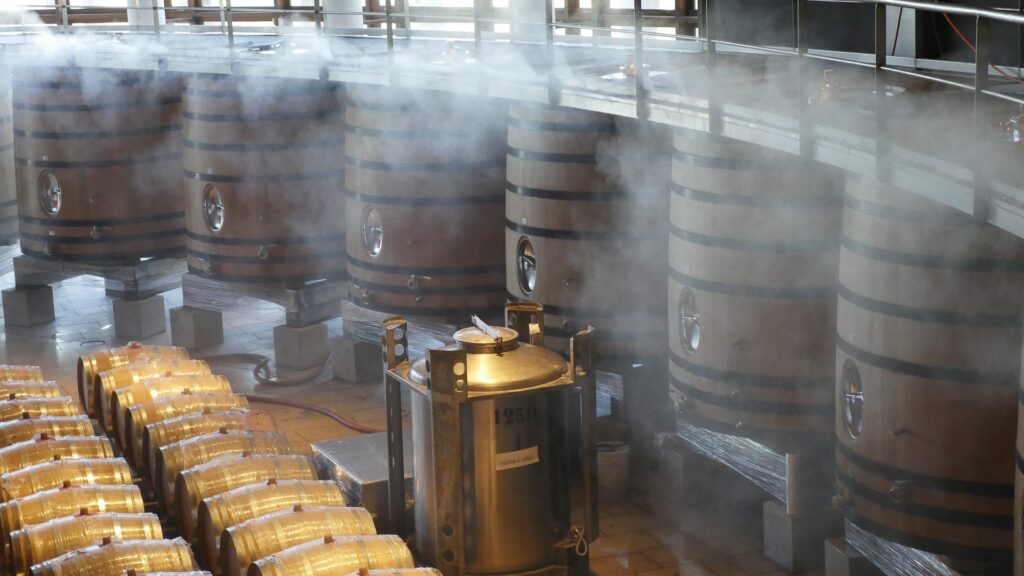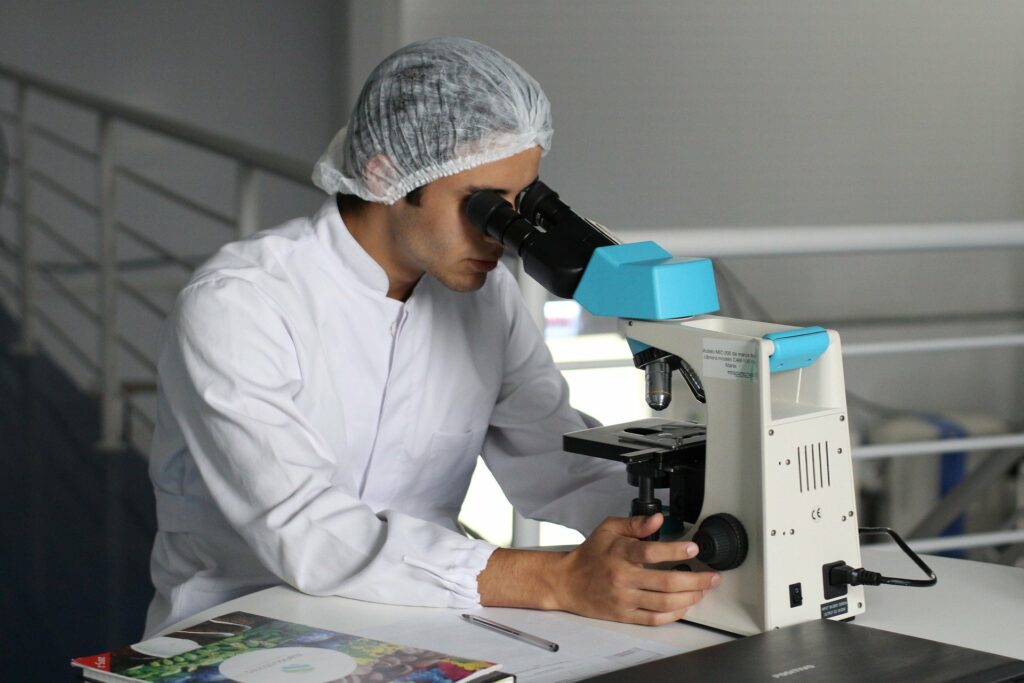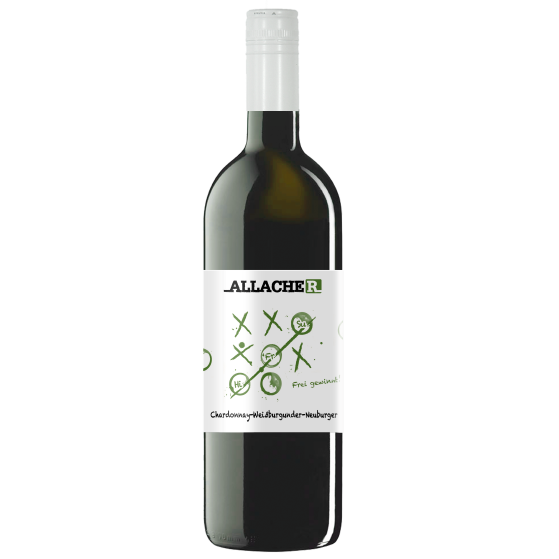All about histamine-free wine
What is histamine-free wine?
Histamine-free refers to wines with a very low histamine content (biogenic amines). Over the years the term “histamine-free wine” has become established for wines with a histamine residual value of 0.1 mg/l. The reason for that is probably that the so-called HPLC method is used to determine the histamine content and that the lower limit of measurement is 0.1 mg/l. There is no legal regulation up to which content wine may be called histamine-free. The histamine analyses are carried out in specialized laboratories.
Enjoyment without discomfort
How has been the development of histamine-free wine?


The first wine-growers started to deal with the issue as early as the beginning of the 2000s. At that time, the knowledge and the experience in this field were still very limited. Thanks to an innovative Austrian winery, other wine-growers are now also dealing with histamine-free wine. In 2007, the winery Allacher from Austria produced the first red wine with a provable histamine residual value below 0.1 mg/l.
The few producers of histamine-free wine are almost exclusively organic wineries. The reason for this is probably that organic wineries appeal to a different group of customers which is likely to react more sensitively to wine.
For reference, a diagram with wines from 1989 and 1990: (see diagram)
Over the last decades, the histamine content in wines has steadily been decreasing. The main reason for this probably is a higher level of hygiene in cellar activities. (see diagram).
Reference values from 100 different red wines from Austria have shown an average of 8 mg/l (the lowest was 0.45 mg/l, the highest was 27 mg/l).
It can be seen that wines from cooler regions have significantly lower histamine levels than those from more southern regions (see diagram). This confirms the assumption that higher temperatures and a higher maturity level of the grapes have negative effects on the histamine content. Austria stands out positively in terms of histamine levels as well as in terms of producers of histamine-free wine. Currently there are three wineries in Austria and one in Germany. Here the topic of organic wine-growing seems to be gaining ground again, too. The three Austrian wineries produce organic wine, the German winery conventional wine.
How is histamine produced in wine?
Histamine is a biogenic amine and is produced either during biochemical processes or during storage and maturation of the wine.
The biochemical process in wine is alcoholic fermentation, where grape juice is fermented into wine by adding pure cultured yeast in a controlled process. This can also be done without adding pure cultured yeast, but it carries the risk of wild yeasts taking over and creating undesirable by-products.
The next process that produces histamine in wine is malolactic fermentation, also called biological acid reduction. This is the second fermentation which is usually only carried out in red wines. For this reason, red wines have a much higher histamine content than white wines (see diagram). During this process, the malic acid is converted into lactic acid or broken down by bacteria. This makes the wine seem more balanced afterwards. Problems during the biological acid degradation process can lead to a significant increase in histamine in the wine. Therefore, this process should take place quickly and be well monitored.
Another important factor for the formation of histamine in wine is the storage in the wine cellar. Several factors can influence how quickly histamine is produced: the storage temperature, the sulphite content in the wine, the cleanness of the barrels and whether the wine has already been filtered.
In summary, histamine is formed during a number of processes and one must take all of them into account when producing histamine-free wine. Once the wine has been bottled, no additional histamine can be formed in the wine, provided it has been bottled in a sterile way.
Histamine-free wine
How to produce histamine-free wine
Basically, there are two ways to produce histamine-free wine:
- Before bottling, the wine can be treated with bentonite. Bentonite is a common fining agent in the wine industry that is used to stabilize proteins. If the wine is produced without considering the formation of histamine, the histamine levels are usually very high. As a result, large amounts of bentonite are needed, which strongly affects the taste of the wine. Red wine in particular suffers from this process, as bentonite not only removes histamine, but also colour, smell and taste of the wine.
- Apart from storage, wine making has the greatest influence on the formation of histamine in wine. If must is processed to wine, it is the best way to prevent the formation of histamine. Understandably, the few winemakers who produce low-histamine wine don’t tell a lot about the vinification process.
Nevertheless, some points are communicated. And these include:
- Rapid processing of the grape
- Extremely clean and hygienic working conditions
- Monitored alcoholic fermentation to reduce the formation of histamine
- The histamine level can be influenced by the biological acid degradation
- The histamine content also depends on the type of wine
- At what point and how finely the wine is filtered
- Wooden barrels can have a strong influence on the histamine content
- The formation of histamine is greatly influenced by the duration of maturation and the storage temperature

Consumers’ experiences with histamine-free wine

We recommend high quality histamine-free wines from Wineyard Allacher in Austria!
Only very few wineries offer histamine-free wine. These are specialized in this field as most wineries test all their wines for histamine.
In two independent customer surveys on the tolerance of histamine-free wine, 89 % of the testers stated that they could tolerate histamine-free wines well to very well despite suffering from a histamine intolerance. Many of the respondents had previously abstained completely from alcohol, in some cases for years. According to the respondents, complaints were mainly caused by the consumption of food with high histamine levels in combination with wine. It should be noted that if histamine-rich food is consumed and wine is drunk afterwards (regardless of whether it is histamine-free or not – alcohol in general), then the alcohol acts as a histamine liberator (it blocks the decomposition of histamine in the intestinal tract).
Therefore, before testing histamine-free wine, a 12-hour diet should be followed to rule out any adverse effect from the wine.
Legal issues:
According to the EU regulation, the designation “low-histamine wine” or “histamine-free wine” may no longer be used for wine as of 01.01.2015.



